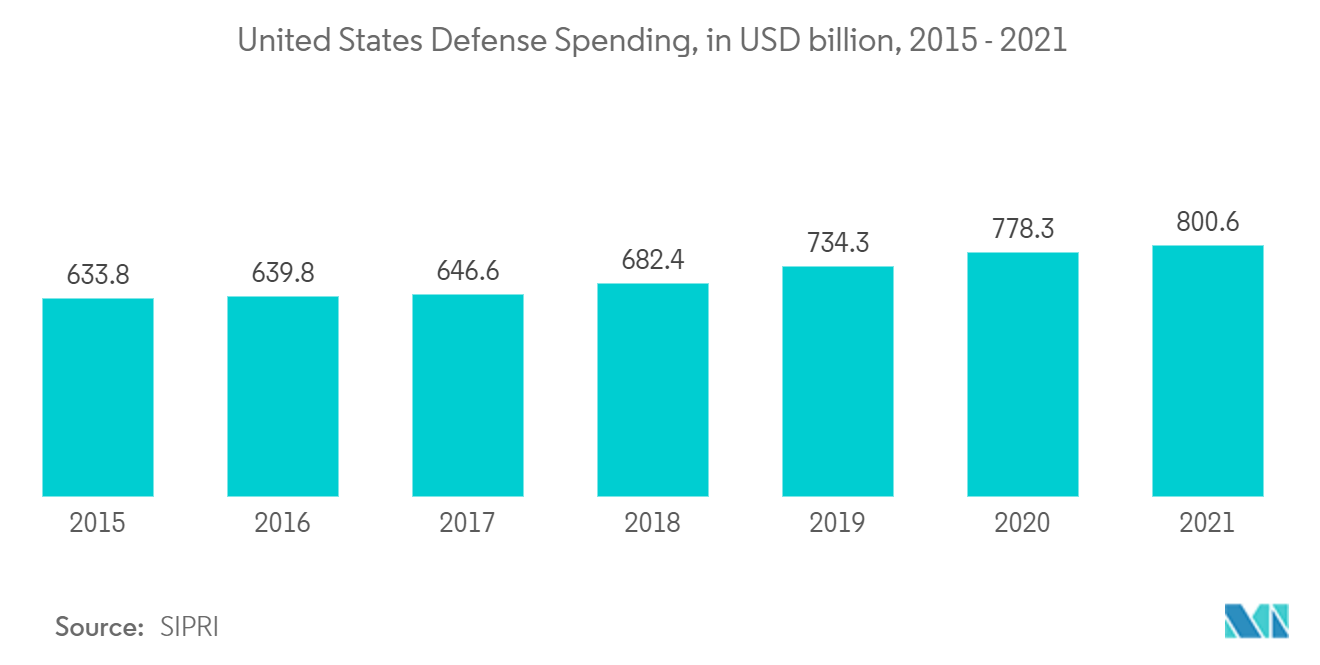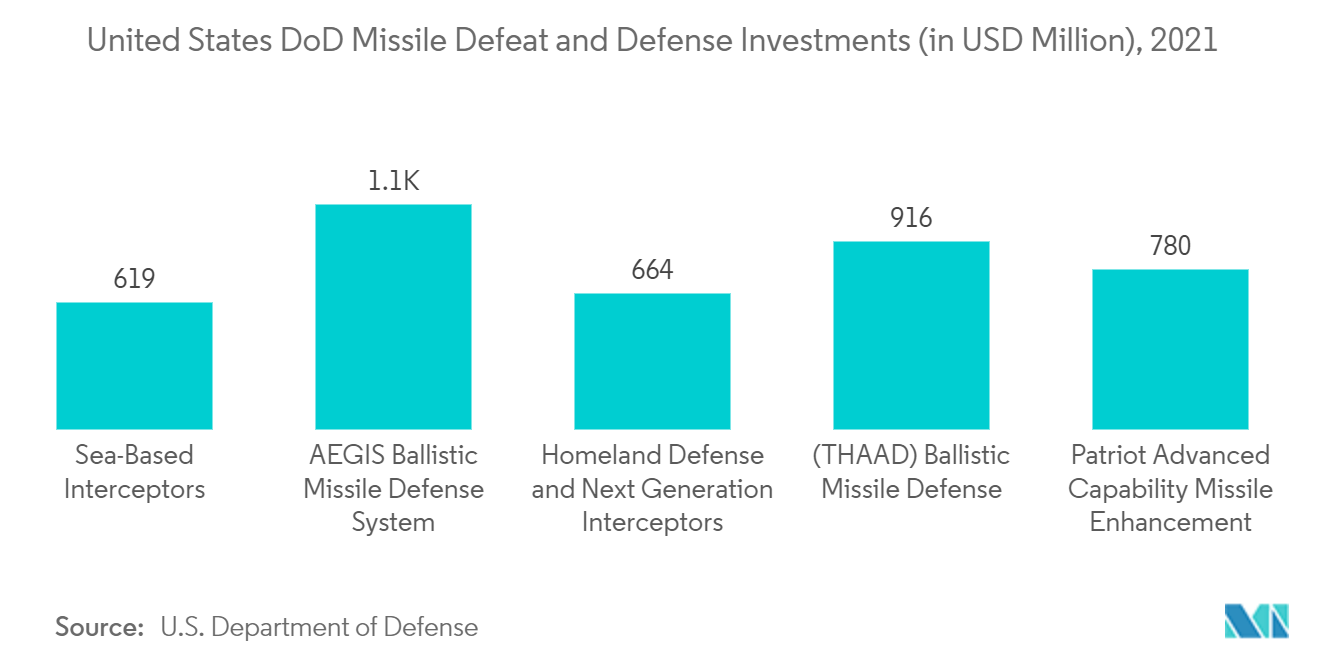Market Trends of North America Missiles and Missile Defense Systems Industry
Missile Defense Systems is Expected to Lead the Market During the Forecast Period
The missiles defense systems segment is projected to show significant growth during the forecast period. Missile defense systems are deployed by global forces to detect, track, and neutralize incoming hostile missiles. The race for military supremacy is bolstering the procurement of new missile defense systems by nations across the world, and countries in North America are aiming to lead the race. The defense budget of the major North American countries, such as the US and Canada, has witnessed a modest Y-o-Y growth over the last decade. The FY 2023 US Department of Defense Budget request of USD 773.0 billion is a USD 30.7 billion, or 4.1% increase, from the FY 2022 enacted amount. The increasing defense expenditure is one of the primary reasons that is pushing the growth of the market. Through the Missile Defense Agency (MDA), the United States is investing in its Aegis Ballistic Missile Defense System (Aegis BMD), which is developed for missile defense against short to intermediate-range ballistic missiles on warships. Currently, the system uses the Aegis Weapon System of Lockheed Martin and the Standard missile of the Raytheon Company. In 2021, MDA requested USD 1,805.1 million for research, development, testing, and evaluation (RDT&E). In addition, the US Navy is planning to install upgraded launchers on the Arleigh Burke-class destroyers. Under the regional glide phase weapon system (RGPWS) program, the government is planning to deploy Mk 41 Vertical Launch System (VLS) launch cell, which can intercept hypersonic boost-glide vehicles. The development and procurement of advanced launch platforms are anticipated to propel the induction and integration of advanced missile defense systems and thereby drive the growth of the segment in North America.

United States is Projected to Show Remarkable Growth During the Forecast Period
The United States was estimated to account for the largest share in the North American missiles and missile defense systems market during the forecast year. The United States is the leading user of such weapon systems in North America, and it is currently focusing on upgrading its existing armada. Moreover, the country is a key exporter and consumer of such equipment globally. The country caters to the demand of its military partners for advanced weaponry, such as guided rockets, ballistic missiles, armed UAVs, submarines, and surface warships. The need to ensure national security and achieve military dominance propelled the need for such a vehicle, thereby, driving the growth of the market in the region. With potential adversaries, such as Israel, Russia, and China, fielding an increasingly diverse, expansive, and modern range of regional offensive missile systems that can threaten the US forces, its allies, and partners, the US DoD is actively expanding and modernizing the US regional missile defenses. In order to modernize its missile defense systems, the US DoD has actively increased its investments in this sector. The country has been testing improved variants of both the Aegis SM-3 and SM-6 missiles, and fielding a new sensor, to significantly increase Aegis missile defense capabilities. The US DoD also plans to improve the capability and reliability of the Ground-based Midcourse Defense (GMD) system. The upgrades include equipping recently deployed GBIs with an advanced booster and a more capable Exo-atmospheric Kill Vehicle (EKV). In December 2021, Raytheon Missiles & Defense, a Raytheon Technologies business, was awarded a USD 578 million contract to produce 54 SM-2 Block IIIAZ all up round upgrades for the United States and 215 Standard Missile-2 all up rounds for seven partner nations. Such developments are envisioned to drive the growth prospects of the market in focus during the forecast period.


